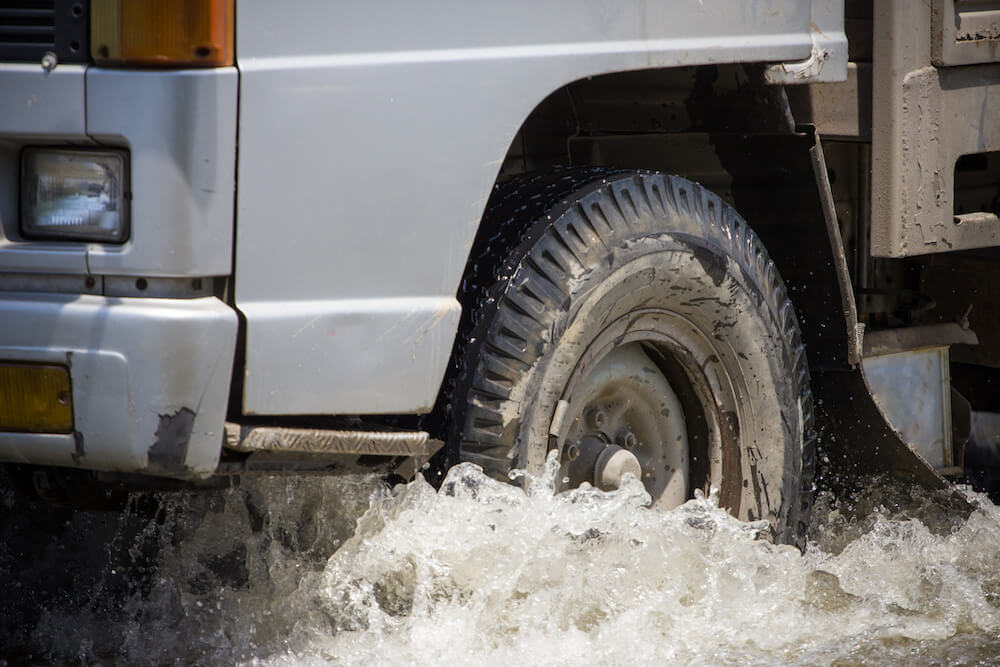Disasters can come in the form of hurricanes, tornadoes, or forest fires. Other disasters are man-made, like vandalism, arson, electrical fire, or even terrorism. FEMA (the government agency that handles disaster relief) estimates that as many as 60% of businesses don’t re-open after a major event like this.
In most cases, it’s not by choice. They’ve lost everything.
That’s why fleet disaster planning is so important for the trucking industry. It allows you to keep your business running (when possible) and quickly recover from a major event.
6 tips for disaster planning for your fleet
1. Plan for a demand increase in case your trucks are needed for relief efforts.
This part of your disaster planning is unique to the trucking industry. While everyone else is getting out, you may be sending trucks in with much-needed supplies. You need to be ready to send your trucks where they need to go.
Plan out some what-if scenarios in the event that duty calls and your trucks are needed. How might daily operations shift? Emergency trucking can include huge delays in heavily hit areas. How might you deal with this?
While you can’t afford to keep extra staff on the payroll for this rare event, you can develop a plan for lean operations that will allow your company to help people who need it.
2. Have an evacuation plan
When you’re disaster planning, you also have to think about your premises. What’s the plan if a fire or other hazard requires an evacuation from the building? Identify how people will physically get out of the building. Practice with your employees so they know the best way to get to safety and you’re ready to smoothly lead them out of the area.
While someone should never put themselves in harm’s way to save merchandise, vehicles, or anything else, it helps to consider how to reduce losses while keeping everyone safe.
3. Have a backup plan for communication.
This is important even for a short power outage. If the power goes out for even a couple hours, will you still be able to stay in touch with your fleet, track shipments, and handle pressing client concerns?
Your backup communication plan may involve purchasing a generator or having some laptops for management that can run on battery power for several hours. Many mobile phone services now offer mobile hotspots. While more expensive, these would help you stay connected to Internet-based data for a short time.
5. Create a continuity plan.
A continuity plan involves how you stay in business during longer interruptions and get back on your feet afterward. During a disaster, you may be dealing with:
- Trucks, warehouses, or offices that were damaged
- Employees who can’t make it into work
- Limited trucks for the number of shipments you have
- Inability to work from your office
- Client delays that may require some reassuring and/or priority shifting to avoid losing clients. Communicating with these clients is a top priority.
To develop a plan, consider how you would keep things running if faced with scenarios like these.
6. Check your insurance coverage.
Check your insurance coverage. A major reason that companies can’t get their businesses back to work after a disaster is that they had inadequate coverage. They just never thought a disaster would happen.
Make sure you understand your policy and coverage limits. A lot can happen in two or three years of growing a business. Your truck insurance needs have likely changed if you haven’t looked at your coverages in a while.
If the policy is no longer meeting your needs, consider increasing your coverage. And while you’re at it, find out if you can get better coverage for less by switching to another carrier. You may qualify for better rates that you didn’t before.
And speaking of insurance, if you want to save money on truck insurance, we can help. Our truck insurance agents can get multiple quotes for your truck insurance so you can compare coverages and pricing. Get started with your quotes by filling out our online quote form or giving us a call today.



